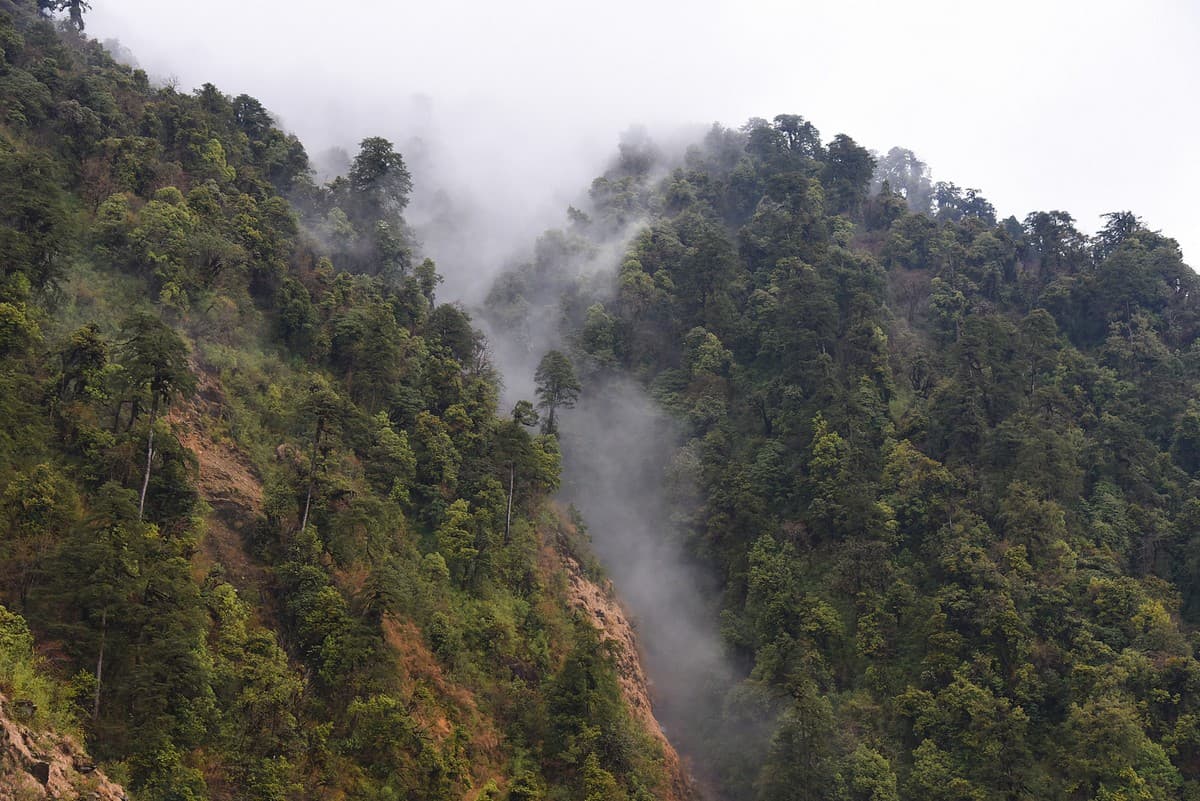Every five years, India’s Finance Commission (FC), a constitutional body instituted by the President, determines the criteria for the devolution of the tax revenue by the Centre to the States. Of the total demarcated fund pool, a percentage of the monies allocated to States are earmarked for forest conservation. This is called as the ‘Forest & Ecology Grant’ or ‘Ecological Fiscal Transfers’ (EFTS).

Mehao Wildlife Sanctuary, Arunachal Pradesh. Photo credit: Dr. Anish Andheria
This forest or green grant is crucial for incentivising the States to conserve forests, and also to aim to do better since a State’s performance in this regard is a factor that influences the overall fund allocated to each State. The forest grant is vital for various purposes such as –
- Preserving forest ecosystems
- Compensating the States for losing out on economic opportunities such as using the forest area for commercial purposes like mining, cultivating plantations, etc.
- Building resilience against the impacts of the changing climate
- Enjoying ecosystem services, and
- Meeting international climate and conservation targets
But the criteria on which these fund allocations are calculated for each State can be improved.
Time to Look Beyond Forests
The green grant factors in only one type of ecosystem – forests, more specifically ‘dense canopy forests’, at the exclusion of other equally important and vibrant terrestrial ecosystems such as the grasslands, deserts, marshlands, etc. A working paper titled ‘Alternative Criteria for Devolution: Looking Back to Move Ahead’, authored by the Economists at the Wildlife Conservation Trust (WCT), attempts to develop alternative criteria that would include all ecosystems, and not just forests. This is an attempt to make the green grant more equitable so that the States are rewarded for preserving non-forested ecosystems as well, and that the socio-economic disparities experienced by the communities living in and around these ecosystems are reduced.

Little Rann of Kutch, Gujarat. Photo credit: Dr. Anish Andheria
The 15th FC assigned 10 percent of the total tax revenue fund pool for distribution among States. For each State, its area under ‘dense forest’ was used to calculate the amount to be devolved to that State. The FC calculated the performance of the States based on the Indian State of Forest Report (ISFR) 2017. Unfortunately, the forest cover mentioned in the ISFR fails to differentiate between forests and plantations.
‘Therefore, an equal weightage for forests and plantations in determining grants is an effort to equate two inherently unequal ecosystems, insinuating a trade-off between public good provision and private profits’, the authors of the working paper write.
This could have been easily rectified had the 15th FC, and FCs that came before that relied on the more robust geospatial satellite data from the Bhuvan portal developed by the Indian Space Research Organisation (ISRO). The Bhuvan dataset is able to differentiate between different types of habitats including grasslands and wetlands, with plantations listed separately. This way, the States that actually contributed more towards conservation of forests would have rightfully received greater amount of fund than what was allocated.
Making Projections for Equitable Grant Devolution Among States
‘Ecosystems cannot be ranked based on their importance; each of these plays a vital role in maintaining the natural balance. Thus, an equal weightage for every ecosystem is the ideal goal,’ the authors further write in the working paper.
To address the shortcomings of the forest grant, the authors have developed an elegant solution. They have developed a calculator to compute an index called the ‘Ecological Functionality Index’(EFI) to make calculated projections of money allocation to each State.
A total amount of Rs. 85,526 crore rupees was demarcated as ‘forest grant’ for distribution among the States by the 15th FC. The authors of the working paper have taken this amount to calculate the projections using the EFI-calculator. They have applied various combinations of criteria by factoring in the areas under forest as well as other equally important terrestrial ecosystems to make these projections.
The alternative criteria included –
- Forest cover (Deciduous and evergreen forest area minus the plantations)
- Forest Index (that includes areas under different terrestrial ecosystems such as deciduous and evergreen forests, scrub forests, mangroves/swamps)
- Forest area + grasslands
- Forest area + wetlands and water bodies
- Forest area + wetlands/waterbodies + grasslands, etc.
In the below interactive map, upon selecting a particular criteria or index, the top five States (gainers) and bottom five States (losers) as per net financial gains and losses will be highlighted. It is interesting to note how these projections show different sets of gainers and losers each time, highlighting the variability in endowment and performance, based on the types of ecosystems under consideration.
Data Visualisation by Purva Variyar
Note: This and other working papers were produced by WCT under its flagship project ‘Fiscal Principles: An Impetus for Natural Capital’. They have formed the basis of consultations with economists and ecologists culminating in a policy recommendation paper. WCT’s team of economists, development researchers, and psychologists, in collaboration with H T Parekh Foundation, has undertaken this unique flagship project which aims to drive policies that create incentives for governing bodies to achieve developmental goals without compromising on ecosystem services. Providing evidence-based and scientifically robust policy recommendations to the Finance Commission on fund devolution will help to do this.
About the author: Purva Variyar is a conservationist, science communicator and conservation writer. She works with the Wildlife Conservation Trust and has previously worked with Sanctuary Nature Foundation and The Gerry Martin Project.
Disclaimer: The author is associated with Wildlife Conservation Trust. The views and opinions expressed in the article are her own and do not necessarily reflect the views and opinions of Wildlife Conservation Trust.
Your donations support our on-ground operations, helping us meet our conservation goals.
Related Links
- Small Grants
- Evolution of Green Grants in India – An Analysis of a Working Paper
- Forensics Vs. Wildlife Crime: On A War Footing
- Forensics in Wildlife Crime Investigation
- Scientists Review and Analyse 70 Years of Published Carnivore Research in India in a Recent Study
- Water heater that helps cut man-animal conflict in Chandrapur wins UN award
